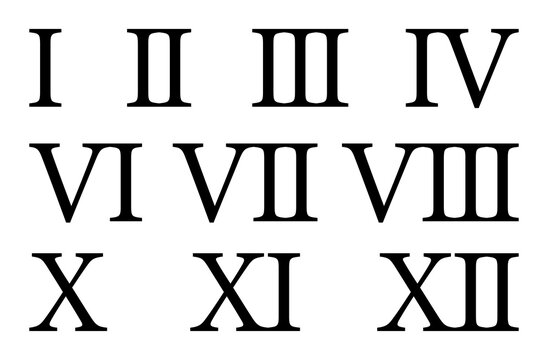Roman numerals are a numeral system that originated in ancient Rome. They are still used today in certain contexts, such as book and movie titles, clock faces, and monuments. To write Roman numerals, you use a combination of letters from the alphabet: I, V, X, L, C, D, and M. The basic rule for writing Roman numerals is to combine the letters to represent the sum of the values. For example, the number 3 is represented as “III” (1+1+1). The number 4 is represented as “IV” (1 before 5). The number 9 is represented as “IX” (1 before 10). When writing larger numbers, it is important to remember the rule of subtractive notation, where you can only subtract a number from the one that is immediately before it (such as “IV” for 4) and you cannot repeat a numeral more than three times in a row. It is also important to note that Roman numerals do not have a symbol for zero and that Roman numerals are not used for large numbers, which is why you won’t see Roman numerals greater than 3,999.
Roman Numerals in Everyday Life
Roman numerals are still used in everyday life, primarily in the numbering of book chapters, movie sequels, and in names of monarchs and popes. They are also often used in clock faces and in the numbering of movie credits. Additionally, they are used in some forms of notation in music and in the numbering of the Super Bowl.
How Roman Numerals Are Made
Roman numerals are made using a combination of letters from the Latin alphabet. The basic symbols are I, V, X, L, C, D, and M, representing the numbers 1, 5, 10, 50, 100, 500, and 1,000 respectively. To form larger numbers, these basic symbols are combined and used in a specific order, with the largest numeral coming first and the smaller numerals following. Additionally, certain subtractive rules must be applied for certain numerals, like 4 is written as IV instead of IIII.
How to Memorize Roman Numerals
Memorizing Roman numerals can be challenging, but there are a few techniques that can help make the process easier.
- Start by memorizing the basic symbols and their values: I, V, X, L, C, D, and M.
- Practice writing the numbers 1-10 in Roman numerals. This will help you become familiar with the basic symbols and their order.
- Create a mnemonic to help you remember the values of the basic symbols. For example, “I before E, except after C” can be used to remember I (1), V (5), X (10), L (50), C (100), D (500), and M (1000)
- Practice writing larger numbers in Roman numerals. Try to write the numbers in your birthdate, phone number, or address.
- Practice regularly, the more you work with Roman numerals, the more familiar you will become with them and the easier they will be to remember.
- Use online tools like games, flashcards, or quizzes to help you memorize and practice Roman numerals.
Conclusion:
In conclusion, Roman numerals are an ancient system of numeration that are still used in some modern applications. They are made using a combination of letters from the Latin alphabet and require a specific order and application of subtractive rules to form larger numbers. Memorizing Roman numerals can be challenging, but practicing regularly and using mnemonics, online tools, and other techniques can help make the process easier. Understanding Roman numerals can also be an interesting way to learn about history and how it continues to influence our daily lives.


